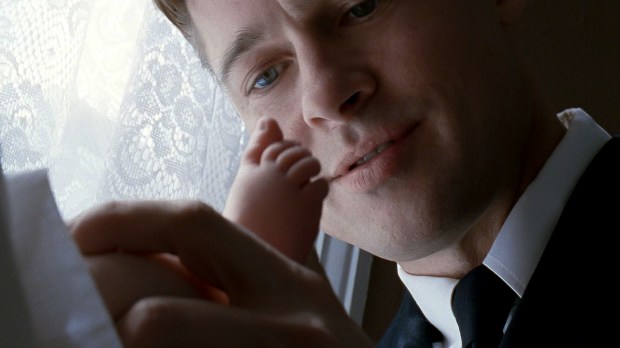When Terrence Malick’s The Tree of Life hit movie theaters five years ago today, the responses were all visceral. Some hailed it as an instant classic; others dismissed it as pretentious garbage; and a whole lot of people left the theater scratching their heads.
Whether you loved it, hated it, or were just plain confused by it, here are five reasons to give The Tree of Life another look in 2016.
1.Before he died, Roger Ebert included it in his list of the ten greatest films ever made.
A year before his passing, Roger Ebert revised his list of the ten greatest films in cinema history. He was faced with replacing Dekalog by Kieslowski because of a rules change. But what could stand alongside classics like Citizen Kane and Raging Bull? For Ebert, it was between two films of “almost foolhardy ambition”: Charlie Kaufman’s Synecdoche, New York or The Tree of Life.
Ebert chose The Tree of Life. “I believe it’s an important film,” he wrote, “and will only increase in stature over the years.”
As fate would have it, the last film Ebert would ever review was Malick’s next film, To the Wonder.
2. Its divisiveness was an early sign of greatness.
“Terrence Malick‘s new film is a form of prayer,” Ebert wrote in his initial review. “It created within me a spiritual awareness, and made me more alert to the awe of existence.”
Not everyone agreed. The critical response was mostly positive, but it still drew “boos” from scattered audience members when it premiered at Cannes, and was panned by a handful of top critics.
Audiences were even more divided; The Tree of Life now carries an unimpressive 60% audience rating at Rotten Tomatoes.
But all of this divisiveness may have been an early sign of something special. Taxi Driver and Pulp Fiction also drew boos at Cannes, and Citizen Kane – now widely regarded now as the greatest film ever made – had a very rocky start. Like other groundbreaking films, The Tree of Life confounded, amazed, and frustrated its audiences when it released. But over time, all of that awe and ire may just converge into a single response: admiration.
3. The cinematographer just made history.
One thing everyone seemed to agree about was that The Tree of Life was a stunning visual achievement. At the 2012 Academy Awards, however, Emmanuel Lubezki inexplicably lost to Hugo’s Robert Richardson for Best Cinematography.
As payback, Lubezki turned around and became the first person to win the award three years in a row: for Gravity (2013), Birdman (2014), and The Revenant (2015).
Lubezki’s collaboration with Malick in The Tree of Life set the stage for – and really should have kicked off – his Oscar sweep. From small-town life in 1950s Texas to the fabric of the cosmos, his framing of the beauty and mystery of the world is a powerful thing to behold (even on your living room television), and is a kind of big bang of the future of filmmaking.
4. The story is easier to follow the second time around.
The visual grandeur of The Tree of Life was enough to distract anyone from its storyline. But Malick also experimented freely with his characters and their locations, creating what many saw as an overly loose narrative. Even Sean Penn was displeased, remarking that “a clearer and more conventional narrative would have helped the film.”
Malick does ask his viewers to keep their eyes (and minds) open, but he won’t leave them in the dust when they do. On a second viewing, the storyline becomes crystallized, and separated out from the more poetic sequences. This opens the door to a deeper dive into the meaning of the film as a whole.
5. The genius is in the details.
One of the qualities of a great work is that you can return to it a thousand times, and every time you find something new. There’s some new image, connection, or idea there that you didn’t see before.
The Tree of Life has this quality. There are fascinating little details that are easy to miss (e.g., the Marian figure that gently shepherds the O’Briens throughout the film). Characters become more subtle and complex, especially Mr. O’Brien (played by Brad Pitt). He’s a flawed man, but a loving father, and there’s a real harmony and between his “nature” and the mother’s “grace”. After all, Jack’s downward spiral into iniquity occurs in the absence of his father, and in the climactic final images, Mr. O’Brien is right there in the arms of his wife and children.
Bishop Robert Barron hits on this in
, which also dives into the film’s biggest theme: theodicy. The Tree of Life launched a “religious stage” of filmmaking for Malick by confronting the mystery of suffering. But the more time you spend with the film, the more you realize that every song, quotation (from Job to Dostoevsky to Romans), and symbol is very carefully and deliberately placed to see one mystery in the light of another. “I give him to you,” Mrs. O’Brien whispers in the film’s final frames, her hands imitating the motions of that Marian figure. “I give you my son.”Ebert is right: The Tree of Life is an important film, and will only grow in stature over the years. Five years later, it already has.

